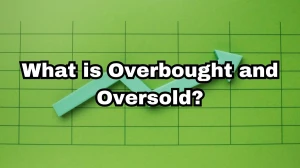
How To Apply For Buyback of Shares Online?
Buyback: Learn the process of applying for a buyback of shares online, ensuring eligibility, understanding tendering, and timely submission, monitoring your Demat account for updates, and adhere to the application window for successful participation.
by Alaguvelan M
Updated Mar 06, 2024
On This Page
What is Buyback of Shares?
A buyback of shares also called a stock repurchase, is when a company buys its shares from its shareholders. This is usually done by companies that have enough money to spare.
It's seen as a positive move because it shows that the company is doing well financially. When a company buys back its shares, it can make its stock more valuable because there are fewer shares available to buy.
There are a few reasons why a company might do a share buyback. One reason is to make the company look stronger, which can attract more investors. Another reason is to prevent other companies from taking over.
Sometimes, companies do a buyback to help their employees who have stock options. Overall, a share buyback can be a smart move for a company to manage its finances and keep its shareholders happy.
How To Apply For Buyback of Shares Online?
Ensure you meet eligibility criteria, such as being a retail investor with shares valued up to ₹2 lakhs. Understand the process of tendering your shares online, check buyback details, know the record date, fill out the tender form, submit your application, receive confirmation, wait for the acceptance ratio, monitor your Demat account, and keep track of timing during the application window.
- Check Eligibility: Make sure you meet the eligibility criteria for the buyback, which includes being a retail investor and holding shares in the company valued up to ₹2 lakhs.
- Understand the Process: Understand how to tender your shares during the buyback offer. Just like buying shares through your Demat account, you can tender your shares online.
- Check Buyback Details: Check the buyback price and the validity of the offer. This is important as it determines how much you could potentially earn from the buyback.
- Know the Record Date: Find out the record date, which is the deadline for having shares in your portfolio to be eligible for the buyback. If you miss this date, you won't be able to participate.
- Fill Out the Tender Form: During the application process, the company will provide you with a tender form. Fill out the form with the number of shares you hold, the number eligible for buyback, and the number you want to apply for buyback.
- Submit Your Application: Once you've filled out the tender form, submit it to the company. The shares you've tendered will then be transferred to the company's R&T agent.
- Receive Confirmation: You'll receive acknowledgment of your application, either in the form of a transaction registration slip or an email from your brokerage.
- Wait for Acceptance Ratio: After you've tendered your shares, the company will calculate the acceptance ratio for the buyback scheme. This will determine how many of your shares will be accepted for buyback.
- Monitor Your Demat Account: Any excess shares you've tendered that are not accepted for buyback will be credited back to your Demat account.
- Keep Track of Timing: Remember that the application window for the buyback is usually between live market hours, from 9:15 AM to 3:30 PM (Monday to Friday). On the last day, the timing is till 12:00 PM to apply.
What are the Types of Buyback of Shares?
Companies frequently engage in share buybacks as a strategic financial maneuver. Through methods like tender offers and open market purchases, these companies seek to bolster shareholder value and optimize their capital structure
Proportional Share Buyback:
- The company buys back shares from existing shareholders based on their ownership proportion.
- Shareholders decide whether to participate within a specified time frame.
Market Purchase:
- The company directly purchases shares from the market through brokers.
- Involves buying a significant number of shares over time.
Fixed Price Offer:
- The company invites shareholders to tender shares for sale at a fixed price higher than the market price.
- Shareholders sell within a specified time frame.
Dutch Auction:
- The company provides a range of prices for shareholders to choose from.
- Shareholders select a price within the range to sell their shares.
- The minimum price set by the company is higher than the prevailing market price.
These methods offer companies flexibility in executing share buybacks to meet their specific needs and adapt to market conditions.
What are the Steps in Buyback Process?
In the buyback process, companies undertake various steps to repurchase their own shares. Here's an overview of the steps involved:
- Tender Offer: Shareholders are given the option to tender some or all of their shares within a specific timeframe at a premium to the current market price.
- Open Market Purchases: Companies buy back shares gradually over time, often following a predefined repurchase plan or program.
- Funding Sources: Companies fund buybacks through debt, available cash, or operational cash flow.
- Expanded Buyback: Companies may choose to expand their existing share repurchase plan to accelerate the reduction of outstanding shares.
- Buyback Ratio: This ratio compares buyback spending over the past year to the company's market capitalization at the start of the buyback period, providing insight into the impact of repurchases and the company's commitment to shareholder value.
Who Can Participate in the Buyback of Shares?
Participation in the buyback of shares depends on certain criteria. Here's a breakdown of who can participate:
- Existing Shareholders: Individuals must be existing shareholders as of the Record Date specified for the buyback offer to participate in a Tender offer buyback.
- Shareholder Status: Any shareholder holding shares of the company during the buyback period is eligible to participate in an open offer.
- Form of Shares: In a Tender offer, shares can be in physical or Demat form, while typically only Demat shareholders can participate in an open offer buyback.
- Considerations for Physical Shares: Companies may have separate procedures for buybacks involving physical shares, often requiring adherence to specific guidelines set by the exchange. As a result, not all companies allow the participation of physical shareholders in open offer buybacks unless their shares are converted into Demat form.
How To Apply For Buyback of Shares Online - FAQs
1. What are the key eligibility criteria for participating in a buyback of shares online?
To participate, one must typically be an existing shareholder and meet specific share value thresholds.
2. How does one tender share during a buyback offer online?
Shareholders can tender their shares through their Demat account, similar to buying shares online.
3. What important details should individuals check before participating in a buyback?
It's crucial to verify the buyback price, offer validity, and the record date for eligibility.
4. What is the significance of the record date in the buyback process?
The record date determines whether a shareholder's holdings are eligible for participation in the buyback.
5. What is involved in filling out the tender form during the application process?
Shareholders need to specify the number of shares they hold, the eligible shares for buyback, and the quantity they wish to tender.




